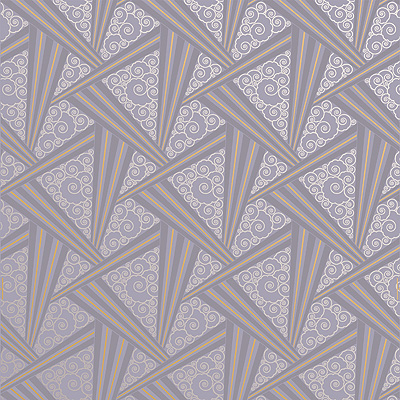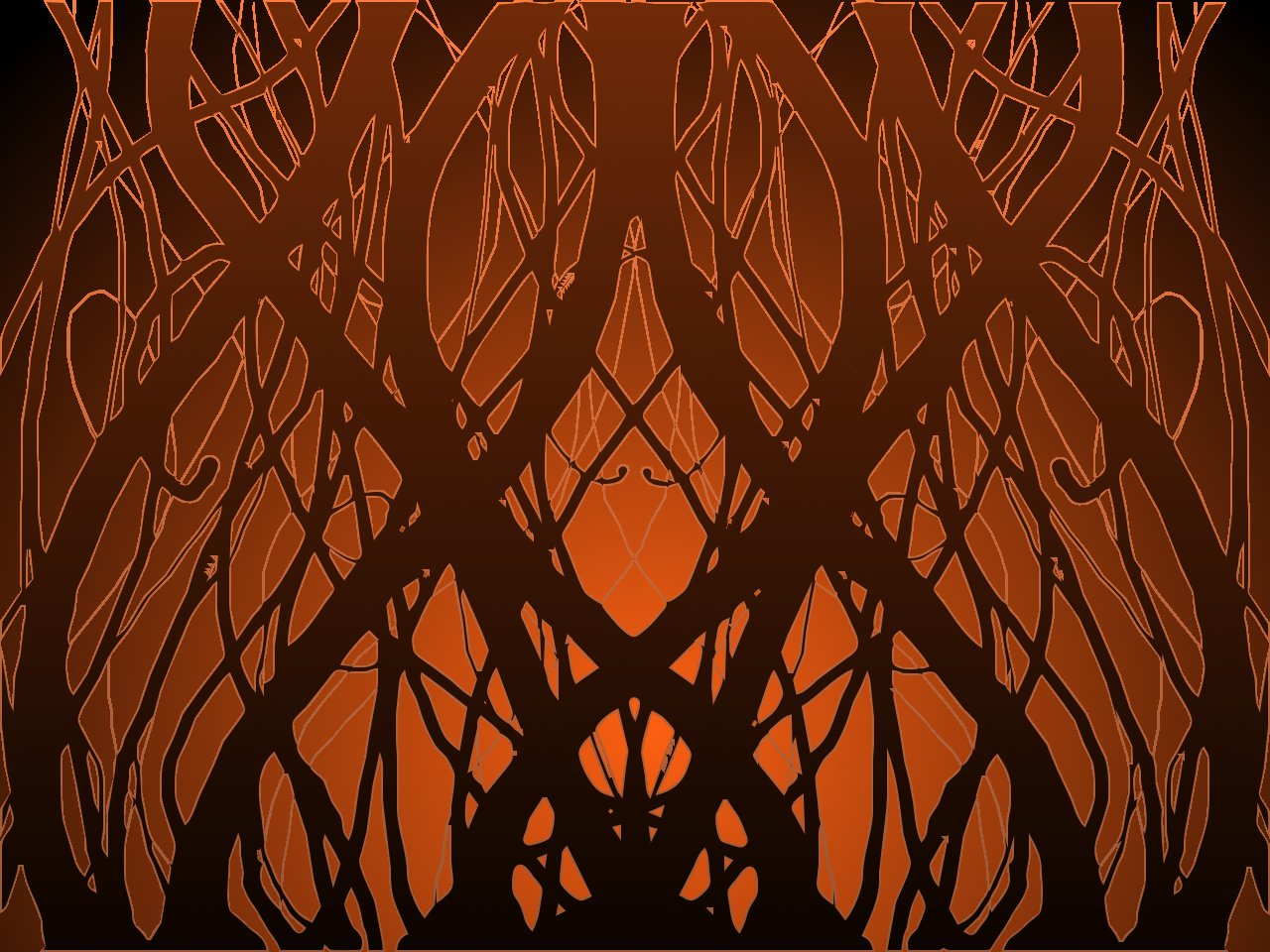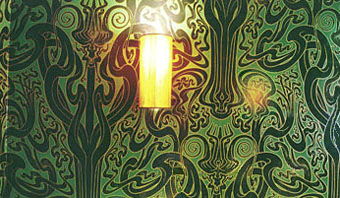Art Deco Wallpaper Designs Biography
He was born in imperial Russia. His first sketch, at age 6, was an evening gown. He loved cats because, like him, they were independent and preferred solitude to company. He designed the costumes for both the silent and the 1959 film versions of "Ben Hur." When he died in 1990 at age 98, he left behind a huge body of work from his long and prolific career, not only as an artist but also as a designer for theatre and opera.
Erte, who became known as "The Father of Art Deco," chose his name from the French pronunciation (accent on the last e) of his initials RT for Roman (Petrovich) Tyrtov. He left his St. Petersburg home to move to Paris when he was 19. His aristocratic parents (his father was a Russian fleet admiral) considered his pursuit of a career in fashion as disgraceful.
Erte's Art Deco style was formed when he worked for Harper's Bazaar. Over two decades, the magazine covers and illustrations he created, 250 in all, also made him famous. He went on to design costumes and sets for the legendary Ballet Russes, the Folies-Bergere, and extravagant Broadway musical productions. He dressed a long list of stars of the day including Josephine Baker, Joan Crawford, Marion Davies, Lillian Gish, and Anna Pavlova.
To quote from his 1975 biography, Erte wrote that he believed it was the duty of every human being to "make himself as attractive as possible." He stated that "not many of us are born beautiful," and considered clothes as being able to transform people into "things of beauty or ugliness." Beauty and glamour were always and still are the signature of his art. The women he portrays are exotic and elegant, the influence of his beautiful mother.
Although Erte reached the height of his fame in the 1930's, an exhibition of a gouache collection at the Metropolitan Museum of Art in 1967 brought new interest to his work.
When he turned 75, Erte decided to broaden his appeal by producing more affordable, limited edition serigraphs. Next he added sculpture and, at the age of 82, jewelry design in the Art Deco style.
Today you can find his art in galleries as well as in museums worldwide. Among them: London's Victoria and Albert Museum, the Metropolitan and The Museum of Modern Art in New York, and the Smithsonian. You can also look for numerous books about this celebrated artist including his previously mentioned autobiography called "Things I Remember."







He was born in imperial Russia. His first sketch, at age 6, was an evening gown. He loved cats because, like him, they were independent and preferred solitude to company. He designed the costumes for both the silent and the 1959 film versions of "Ben Hur." When he died in 1990 at age 98, he left behind a huge body of work from his long and prolific career, not only as an artist but also as a designer for theatre and opera.
Erte, who became known as "The Father of Art Deco," chose his name from the French pronunciation (accent on the last e) of his initials RT for Roman (Petrovich) Tyrtov. He left his St. Petersburg home to move to Paris when he was 19. His aristocratic parents (his father was a Russian fleet admiral) considered his pursuit of a career in fashion as disgraceful.
Erte's Art Deco style was formed when he worked for Harper's Bazaar. Over two decades, the magazine covers and illustrations he created, 250 in all, also made him famous. He went on to design costumes and sets for the legendary Ballet Russes, the Folies-Bergere, and extravagant Broadway musical productions. He dressed a long list of stars of the day including Josephine Baker, Joan Crawford, Marion Davies, Lillian Gish, and Anna Pavlova.
To quote from his 1975 biography, Erte wrote that he believed it was the duty of every human being to "make himself as attractive as possible." He stated that "not many of us are born beautiful," and considered clothes as being able to transform people into "things of beauty or ugliness." Beauty and glamour were always and still are the signature of his art. The women he portrays are exotic and elegant, the influence of his beautiful mother.
Although Erte reached the height of his fame in the 1930's, an exhibition of a gouache collection at the Metropolitan Museum of Art in 1967 brought new interest to his work.
When he turned 75, Erte decided to broaden his appeal by producing more affordable, limited edition serigraphs. Next he added sculpture and, at the age of 82, jewelry design in the Art Deco style.
Today you can find his art in galleries as well as in museums worldwide. Among them: London's Victoria and Albert Museum, the Metropolitan and The Museum of Modern Art in New York, and the Smithsonian. You can also look for numerous books about this celebrated artist including his previously mentioned autobiography called "Things I Remember."
Art Deco Wallpaper Designs

Art Deco Wallpaper Designs


Art Deco Wallpaper Designs

Art Deco Wallpaper Designs

Art Deco Wallpaper Designs

Art Deco Wallpaper Designs

Art Deco Wallpaper Designs

Art Deco Wallpaper Designs

Art Deco Wallpaper Designs
Over 100 Art Deco Early Modern Sears Wallpaper 1920's Style Samples
Art Deco Wallpaper Designs
Art Deco Murals by ATADesigns
Transform any space in your home or office with art and photo wall murals from Murals Your Way. Choose from thousands of works of art, designs or photos. Get the perfect mural wallpaper in any size you need. We will print your wallpaper mural on your choice of our high quality materials. wall murals
ReplyDelete